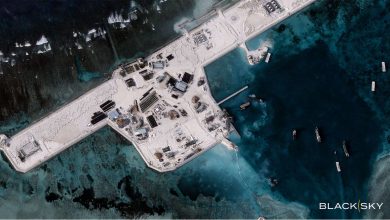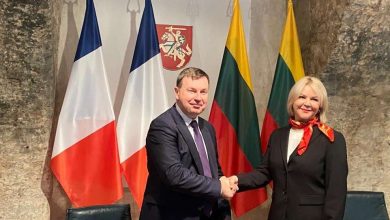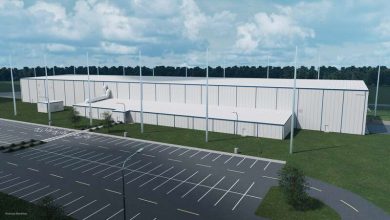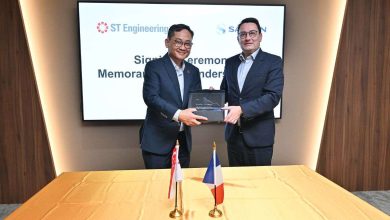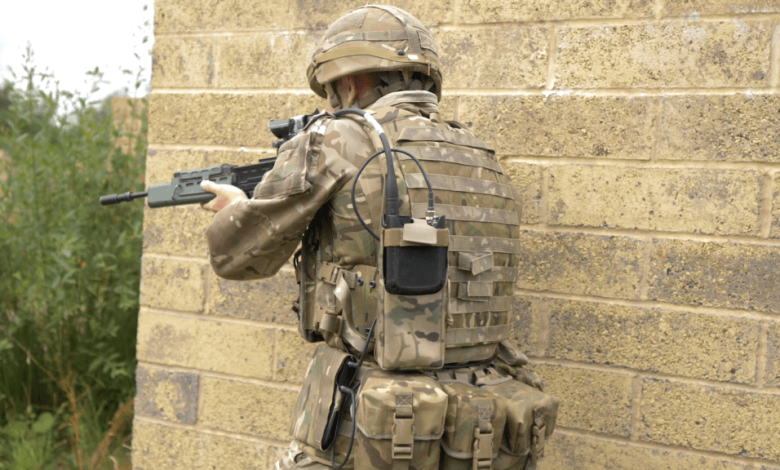
“Revolutionizing Combat: Thales Equips UK Forces with Cutting-Edge Tech at Army Warfighting Experiment”
Thales in the UK, a frontrunner in cutting-edge technologies, showcased its superior integration capabilities at this year’s Army Warfighting Experiment (AWE).
Building on the achievements of the previous year, Thales presented an extensive array of solutions crafted to equip soldiers with enhanced situational awareness, communication, and electronic warfare proficiencies, tailored for operations in urban settings.
Showcased Proficiencies
The display by Thales at AWE focused on the cohesion of terrestrial systems with aerial intelligence platforms. Included were a Thales ISTAR Node, SquadNet compact soldier radios, an HFXL radio, and Storm 2 – Thales’ ultra-compact, lightweight personal CEMA system.
AWE unveiled Storm 2 in the hands of soldiers for the inaugural time, employing the system to identify data signals as they navigated through the urban landscape. Linked via Thales’ SquadNet radios, upon spotting a potential hostile network, Storm 2 directed the ISTAR sensor toward the pertinent location. The resulting intelligence was swiftly relayed back to the soldier, complete with imagery and supplementary data on the possible threat. All these processes, from initial detection to intelligence delivery, utilized Thales’ sophisticated algorithms to significantly streamline the procedure – alleviating cognitive burdens from the end-user.
Thales also showcased its newly launched data-first HFXL radio in collaboration with Allied forces. This state-of-the-art wideband HF radio pairs with SquadNet radios to create a comprehensive communication network that connects frontline soldiers, commanders, and intelligence platforms in real-time, without the necessity for any communications infrastructure.
The prototype ISTAR Node occupies a central role in this innovative architecture. Ensuring that the electro-optical camera data from an Uncrewed Air System (UAS) overhead is accessible to soldiers through their SquadNet radios, and that electronic intelligence is available to the UAS crew from Storm 2 as well as relayed back to the command center.
The ISTAR Node also linked Allied forces, with targets acquired by a French sighting system and Storm 2 CEMA contacts employed to cross-cue the UAS while delivering resulting imagery to troops on the ground. A subsequent strike by ground forces was overseen by the UAS, with the ISTAR Node utilizing Thales’ HFXL radio link to transmit the complete tactical situational awareness overview (imagery and CEMA) back to the command center.
Thales Technologies at AWE
- Storm 2: Lightweight sensing and electronic warfare systems carried by soldiers capable of detecting hostile networks, safeguarding users against RCIEDs, and deploying CEMA offensively to gain operational dominance through electronic influence.
- SquadNet: A compact, yet highly proficient soldier radio, enhancing decision-making in combat scenarios, and facilitating the networking of varied sensors to provide a holistic tactical overview.
- HFXL Radio: Thales’ groundbreaking data-first radio enabling long-range, infrastructure-independent communication, allowing commanders to maintain operational oversight at a distance.
- ISTAR Node: Thales’ prototype Digital Architecture for UAS streamlines processing, exploitation, and dissemination of tactical data between aerial and ground-based units to accelerate the sense-decide-effect chain. This will also facilitate rapid capability insertion to maximize innovative technologies like AI in tactical engagements.
John Dix, UK Sales Manager for Land Communications, elucidated the significance of these technologies: “The integration of these systems is a transformative element for the modern battlefield. For the first time, soldiers can receive immediate, precise intelligence from UAVs during operations. Concurrently, commanders can make informed decisions based on real-time data transmitted securely over HFXL radios, which is vital in contested environments. Collectively, this guarantees our troops possess a tactical edge in any urban operation.”
Facilitating Modernisation and Protection
By integrating tactical UAS through Thales’ ISTAR Node with ground-based systems like Storm 2, the British Army can respond more decisively, harnessing real-time intelligence to disrupt and dislocate enemy operations. These enhancements not only fortify protection but also enable offensive maneuvers, creating a more agile and adaptable force.
The newly unveiled HFXL radio also plays a crucial role in these advancements. Providing secure, infrastructure-free communication over extended distances, this data-focused radio empowers commanders to uphold operational control even in contested spaces. Compared to other wideband radios available, Thales’ HFXL system stands out for utilizing multiple non-contiguous channels and a cognitive engine that continually scans the HF spectrum, selecting the optimal frequencies. This renders HFXL inherently more secure, efficient, resistant to jamming, and capable of transmitting large data packages while keeping troops’ positions concealed.
The Importance of Innovation
Thales’ integrated solutions revealed at AWE embody the future of warfare, where advanced algorithms, sensors, uncrewed systems, and communication technologies converge to ensure that British soldiers remain better informed, better protected, and more lethal. By providing seamless data communication and tactical intelligence from the frontline to command, Thales empowers soldiers to respond swiftly and effectively to threats, ensuring the British Army retains its operational supremacy.
John Dix concluded, “AWE is essential for advancing the modernisation of the British Army. By deploying these technologies into the hands of soldiers early in the product development cycle, we can gather valuable feedback to fine-tune our systems and expedite their deployment, ensuring British and allied forces maintain an edge in an ever-evolving landscape of threats.”



